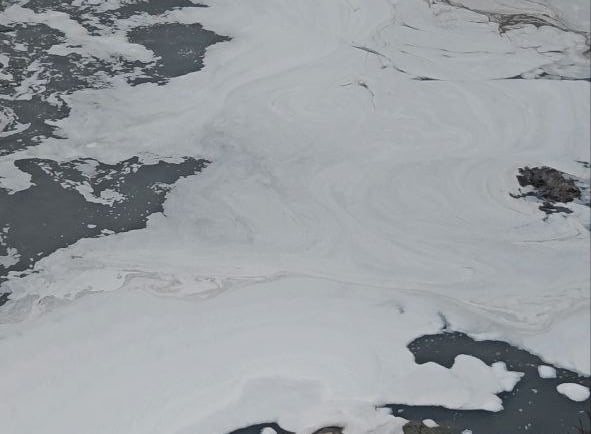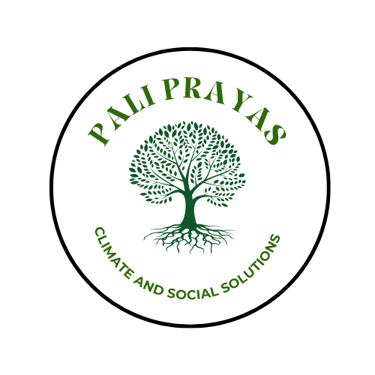Morar River: The Dying Soul of Gwalior’s 300-Year-Old History
When I moved from Gwalior to Delhi, people called it the "city of historicity." But beyond its forts and palaces, Gwalior's true living history, its Morar River, is dying. This article reflects on the river’s 300-year journey, its scientific and emotional significance, and why saving it is not just about water, but about preserving the soul of Gwalior.
WATER


When I moved from Gwalior to Delhi for my undergraduate studies, I often found myself introducing my hometown to new friends and professors. Whenever I said, "I am from Gwalior," the response would often come with a spark of recognition—"Oh, from the city of historicity!" It made me proud, but it also made me think. Gwalior's historicity is not just in its grand fort, its palaces, or its temples. Gwalior’s soul, its living heritage, also flows in the form of the Morar River—a river that has witnessed centuries of life, change, and memory.
In the heart of Gwalior, there flows this river—silent, wounded, but still alive—named Morar. Its origin can be traced back to the ancient Saaton ki Pahadiyan, from where it gracefully descended, giving life to the land and its people. Historical accounts suggest that before 1754, the Morar River had already begun its timeless journey from these hills, winding through the landscape, blessing every village and field it touched.
Over centuries, four dams—Kachhai, Jaderua, Bahadurpur, and Guthina—were built across it, not to block its spirit but to harness its abundance for agriculture, drinking, and daily life. The Morar River flowed past Jaderua, Defense Area Nala, Kalpi Bridge, Gandhi Road, Mehraa Village, North Mehraa Nala, South Hurawali Bridge, Prithvi Nagar, Sirol Village, Dongarpur Road, Alapur Nala, and Bypass Bridge quietly witnessing the evolution of Gwalior from a princely state to a modern city.
As far as we could trace, talking to old residents, combing through dusty newspaper archives, and referring to official documents, the Morar River was once the lifeline of Gwalior. Elderly citizens like Ramlal, who has managed the Jaderua Dam for decades, emotionally recount, "We used to drink from this river, bathe in it, irrigate our fields with its waters... it was pure, it was sacred. After 1985, it started dying before our eyes—used as a sewer, treated like a waste channel. It hurts to see what we have done."
Morar River today, despite its physical existence, has been reduced to a mere drain—a tragic fall from its past glory. In 1985, a major shift occurred when authorities began using the river as a drainage line for untreated sewage and waste. Slowly, clean water gave way to black filth. Natural flora and fauna that once flourished around Morar began disappearing. In 2017-18, hope flickered. A team from the Central Water Commission visited Gwalior, surveyed Morar, and officially recognized that the river was not dead—a vital scientific validation. Under the Namami Gange framework, which aimed to rejuvenate rivers across India, a grand project worth ₹482 crore was prepared for Morar’s revival. Plans included channeling clean water, building stop dams at strategic points, and restoring the river to its original natural form.
However, in the years that followed, political will and administrative urgency dwindled. The Detailed Project Report (DPR) was revised—slashed from ₹317 crore to ₹166.19 crore, ostensibly to reduce costs rather than preserve heritage. Some minor work began but stalled midway, yet again betraying the river and the generations that lived by it. In 2025, a new ray of hope was announced: under the Central Government’s Namami Gange Project, ₹39.24 crore were sanctioned specifically for Morar. The project was awarded to MDP Infra India Pvt. Ltd. for ₹22.19 crore, aiming to cleanse the river, stop the 24 sewage drains that pollute it, and build protective walls along 3.5 km to prevent further human dumping. Yet as of today, the sewer lines continue to discharge directly into the river. Under the AMRUT scheme too, sewage lines were laid, but no one ensured that the drains feeding into Morar were properly plugged. Consequently, clean water remains a dream deferred.
From a scientific perspective, a river’s health can be gauged by its Biological Oxygen Demand (BOD) and Chemical Oxygen Demand (COD) levels. A healthy river has a BOD below 3 mg/L. Preliminary surveys of Morar reveal BOD levels several times higher, meaning that the water is practically dead, incapable of supporting aquatic life. Moreover, the river’s natural recharge zones in the Saaton ki Pahadiyan have been encroached upon. Without natural infiltration and sustainable catchment protection, the river loses not just its flow but also its ability to self-cleanse. It becomes a linear landfill, a festering wound across Gwalior’s landscape. Adding to this crisis is the loss of riparian vegetation, which acted as natural filters. Without them, soil erosion, waste dumping, and silt accumulation further choke the riverbed.
If we step back and reflect, what are we doing? Morar is not just a river; it is 300 years of Gwalior’s history flowing through time. When we poison its waters, when we treat it as a waste canal, we are killing our own legacy, erasing the life memories of countless generations who once thrived on its banks. Every drop that once nourished crops, every breeze that once cooled villages, every reflection of the rising sun on its waters—these are the treasures we are allowing to die. Talking to local villagers, elders, and historians, one thing becomes painfully clear: there is love for Morar, but there is no urgency to save it. We remember it fondly, but we act indifferently. Are we going to tell future generations that we had a river, alive for three centuries, and we killed it because of our apathy?
Plans have been made. Budgets have been sanctioned. Surveys have been conducted. And yet, the river continues to decay. Morar’s revival demands more than government schemes. It demands that Gwalior’s citizens wake up and reclaim their river. It demands that the administration treat river restoration not as a paperwork exercise but as a sacred duty. All 24 drains must be urgently intercepted and treated. Untreated sewage must be strictly banned from entering the river. Natural greenery and riparian ecosystems must be restored. Local communities must be involved in guarding and protecting the river. Regular water quality testing must be made public to hold authorities accountable. It is a race against time.
Morar River still flows, even if barely. It still carries the memory of a thousand sunsets, countless laughter-filled baths. It is our moral, historical, and scientific duty to protect this living heritage. Every day we delay, we write another line in the obituary of a river that gave Gwalior its life.
We must ask ourselves: When will Morar flow clean again? When will we honor our history, not kill it? The answer lies not in future promises, but in the actions we take today. Before the river that witnessed centuries of life becomes just another forgotten line in the pages of history.
